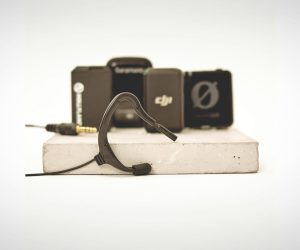
Termination: Common Sensor Approach
Common Sensor Approach.
Text:/ Graeme Hague
AV sensors? I’ve got one. It’s in the car port and when I arrive home at night the sensor is supposed turn on a light. What really happens is that I park the ute in pitch black, get out of the car and bash my shin on the towbar, then I do these weird star-jumps and wave my arms in front of the sensor to determine if the stupid thing is working, which plainly it isn’t.
Unless, of course, the neighbour’s black cat wanders within a 100m of the sensor anytime after 3am and the damned light turns into a full Pink Floyd concert rig.
The reason sensors are so popular is because we don’t want to do anything for ourselves. We want sensors to look, listen, see and think for us, so we don’t have to make any effort. Is it possible we might take this attitude too far? If we let our five basic senses of sight, hearing, touch, smell and even taste be completely substituted by an electronic equivalent, could anything go wrong?
Don’t be silly: take off the al foil hat, close the door to that worst-case-scenario bunker and lighten up a little. This is awesome stuff. Think of the potential.
MOTION SENSORS: BOGGED DOWN
Motion detectors have long replaced snoozing security guards, making it supposedly impossible to trespass anywhere without being ‘seen’ (apart from my bloody car port). Motion sensors already turn on lights, open gates and occasionally trigger those blowing, hand-drying things in restrooms. With miniaturisation we can put sensors inside the bar fridge to catch that bastard who didn’t bring any beers to the barbecue, or discreetly install one in the toilet to reveal who’s using more than four sheets. The latter is ecological, planet-saving sensor design. Important.
Sound sensors come in the form of microphones, of course — and I’ve come up with yet another brilliant invention (one day our editor is going to recognise my genius). The technology is already available to recognise voices and sounds to trigger desired actions. So I’m working on a ‘television commercial sensor’ that listens to your telly and as soon as an advert comes on, the sound is automatically muted. You’d have to program the undesired content into the sensor first — a sort of convolution reverb impulse for breakfast cereal commercials — but that won’t take long given how frequently networks cycle the same adverts. The end result? You’ll never have to press a Mute button again. That’s real progress. [Okay, genius, there might be something in that — Ed.]
TOUCH SENSORS: FOOD FOR THOUGHT
Touch sensors are everywhere. They’re so commonplace you need to think outside the box to come up with unique touch sensor applications — like floor-mounted pressure mats in the queues of fast food outlets. We could seriously tackle the global obesity problem by sensing customers who are overweight and when they reach the head of the line, the digital signage for anything over 500 calories is blacked out. Loud alarms could go off with flashing red lights, and to identify the culprit properly maybe some of those big, pointy-finger hands they use at the football could drop out of the ceiling? Sensor technology plainly has unlimited potential in the health sector.
A taste sensor is where things get personal — and we’re not talking about the kind of ‘taste’ that prompts the wearing of Hawaiian shirts or long, white socks with sandals (mind you, that sort of automated alarm system could have a hell of a lot of merit). Instead, imagine being able to capture the taste of absolutely the best food you’ve ever eaten. Like those sausage sizzles out the front of hardware stores on weekends. A bit like having your DNA sampled or fingerprints taken (how do you get the ink off, by the way?) a sensor could record that fantastic taste and apply the data to your next meal. Rather than needing messy cooking instructions and food processors, you select a menu that includes the aforementioned sizzled sausage sample and simply press ‘Cook This’. Dinner is served perfectly, thanks to sensor technology that’s accurately detected taste. Ingenious.
OLFACTORY, OLD SPICE
Smell… now we’re getting tricky. Yes, sensors can detect unwanted chemicals in the air to protect against hazardous gases, but what about actual bad smells? A sensor that’s triggered by unacceptable levels of body odour could be invaluable in certain office workspaces. Gone would be the need for tact, diplomacy and subtle hints like dumping a packet of urinal disinfectant tablets in someone’s briefcase. Instead, the smell sensor with exacting proximity parameters sets off an alarm whenever some smelly bastard walks past — the message is well and truly delivered without a need for any awkward conversations or anybody being embarrassed by some ‘frank’ discussion about hygiene. This is where sensors contribute to providing a harmonious workplace, boosting the economy.
As always, I’m open to offers of financial support to develop these ideas. Or maybe we can cut a deal to fix the bloody sensor light in my car port.
Graeme Hague is his ideal weight, has the personal hygiene of the Old Spice Man, is parsimonious with his loo roll usage, loves TV, hates ads and accepts all major credit cards.















RESPONSES